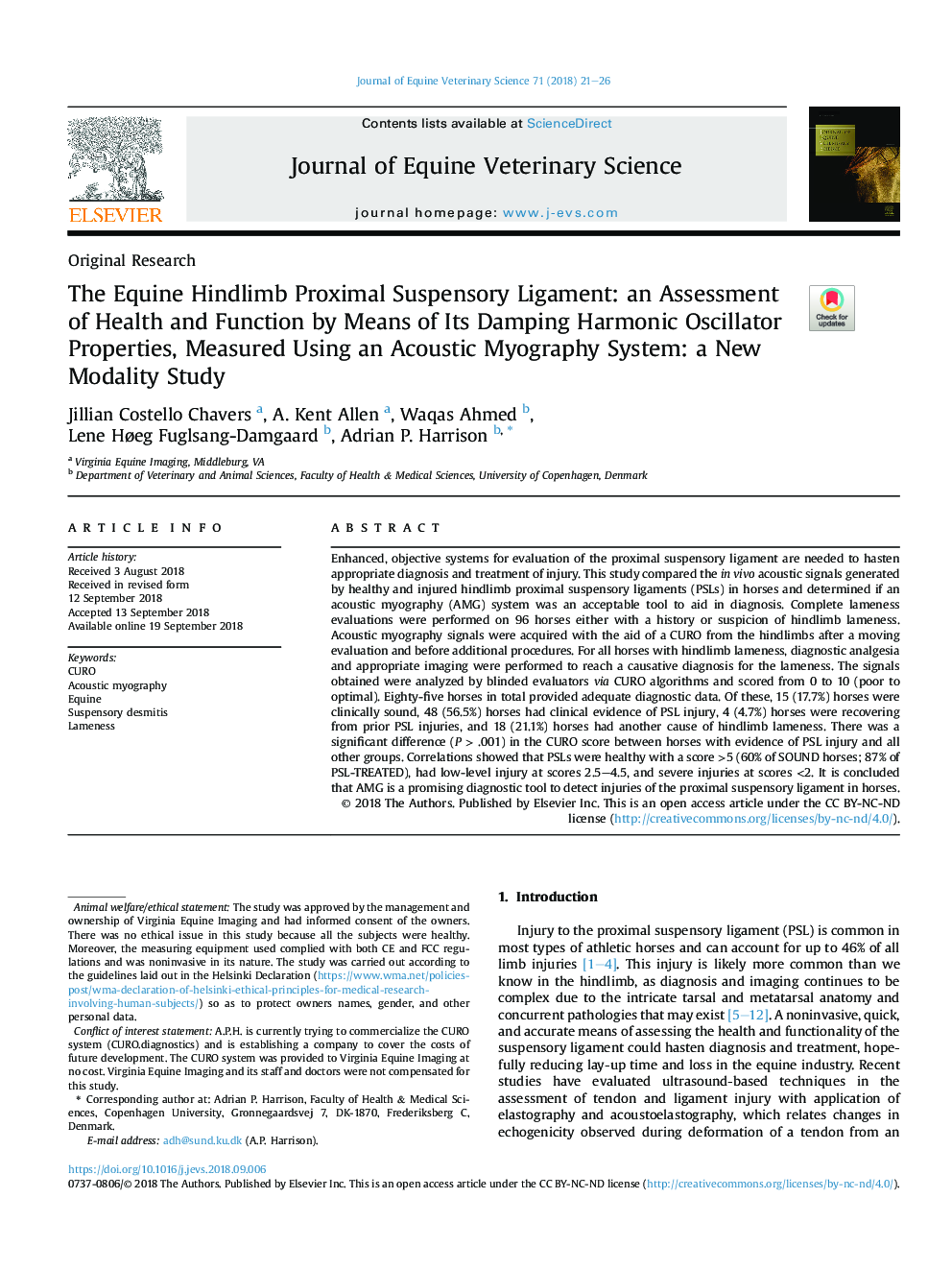| Article ID | Journal | Published Year | Pages | File Type |
|---|---|---|---|---|
| 11019457 | Journal of Equine Veterinary Science | 2018 | 6 Pages |
Abstract
Enhanced, objective systems for evaluation of the proximal suspensory ligament are needed to hasten appropriate diagnosis and treatment of injury. This study compared the in vivo acoustic signals generated by healthy and injured hindlimb proximal suspensory ligaments (PSLs) in horses and determined if an acoustic myography (AMG) system was an acceptable tool to aid in diagnosis. Complete lameness evaluations were performed on 96 horses either with a history or suspicion of hindlimb lameness. Acoustic myography signals were acquired with the aid of a CURO from the hindlimbs after a moving evaluation and before additional procedures. For all horses with hindlimb lameness, diagnostic analgesia and appropriate imaging were performed to reach a causative diagnosis for the lameness. The signals obtained were analyzed by blinded evaluators via CURO algorithms and scored from 0 to 10 (poor to optimal). Eighty-five horses in total provided adequate diagnostic data. Of these, 15 (17.7%) horses were clinically sound, 48 (56.5%) horses had clinical evidence of PSL injury, 4 (4.7%) horses were recovering from prior PSL injuries, and 18 (21.1%) horses had another cause of hindlimb lameness. There was a significant difference (P > .001) in the CURO score between horses with evidence of PSL injury and all other groups. Correlations showed that PSLs were healthy with a score >5 (60% of SOUND horses; 87% of PSL-TREATED), had low-level injury at scores 2.5-4.5, and severe injuries at scores <2. It is concluded that AMG is a promising diagnostic tool to detect injuries of the proximal suspensory ligament in horses.
Keywords
Related Topics
Life Sciences
Agricultural and Biological Sciences
Animal Science and Zoology
Authors
Jillian Costello Chavers, A. Kent Allen, Waqas Ahmed, Lene Høeg Fuglsang-Damgaard, Adrian P. Harrison,
